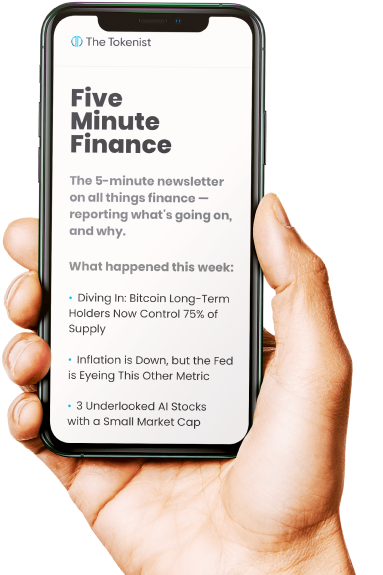
Why Alphabet’s Gemini 3 Challenges AI Bubble Fears
Nearly a month ago, we explained the true positioning of Alphabet/Google, running the Control-as-a-Service (CaaS) business model. Despite the steady degradation of its core service – Google search – the company has been erected as the world’s preeminent chokepoint of information.
Any chokepoint is extraordinarily valuable as a launchpad for affecting the flow, framing and perceived legitimacy of information itself. This lever extends beyond the advertising model into the architecture of public consensus – a valued commodity for governance.
And in this capacity, Google has privileged access to leverage the world’s data to develop an even more advanced CaaS, powered by AI. It is then no surprise when Google’s Gemini 3 took the lead among large language models (LLMs), boosting GOOGL stock by 13% over the past week.
Since the aforementioned article, the GOOGL stock price went from $268.43 to the current price of $318.58 per share. The question is, does the market correctly price the long-term monetization of Google’s power relative to the political and regulatory headwinds it invites?
Gemini 3 Offsetting AI Bubble Fears?
In late 2024, we leaned heavily on the side of AI not being a bubble. Specifically, because there has never been such a level of coordination between governments, Big Tech and global institutions like WEF – via public-private partnerships (PPPs) – to make AI an essential layer of the internet. The end-goal is to harness this layer to intercept thoughts and shape behaviors for streamlined governance.
In other words, AI is not driven by speculative hype alone but is acted upon as a global digital infrastructure. As such, AI-infrastructure-building has institutional blessing at the highest levels, even to the point of recommissioning nuclear reactors for data-center power.
We have also seen the AI layer being added to the military-industrial complex, primarily led by Palantir and Oracle. While Nvidia structurally embedded itself as the key hardware supplier in this transformation, Alphabet is shaping how AI is deployed, accessed and monetized across the web.
From embarrassing Bard beginnings, bound by hyper-racialized politicking, Google’s Gemini 3 is now above all other LLMs.
Leveraging Google’s unparalleled data access, Gemini 3’s reasoning is now more nuanced as it more aptly integrates contextual clues. As a multi-modal LLM – synthesizing information from text, audio, image and video – this also means that Gemini 3 is more competent as a digital personal assistant.
Although users should still oversee its tasks, Gemini 3’s expanded context window increased its capacity for long-horizon planning and to follow complex instructions with minimal prompting. For the public and investors, this signals that the AI performance plateau is not as cemented as previously indicated by Apple’s “The Illusion of Thinking” paper.
According to Google, Gemini app has already over 650 million monthly users. Yet, Gemini is just the entry point into Google’s broader strategy to build up its interconnected ecosystem of cloud, apps, AI agents and tensor chips.
Join our Telegram group and never miss a breaking digital asset story.
Alphabet’s Integration Ambition
When Adobe competitor Figma (NYSE: FIG) acquired Weavy AI startup in late October, it illuminated the likely business model for most companies in the AI arena. Namely, by providing a node-based workflow in which users can tune AI-generated content, they attach themselves to the underlying AI models to achieve optimal results.
In the case of Figma, this would be Google’s Nano Banana AI plugin. Although Figma’s workflows are currently hosted on Amazon Web Services (AWS), other companies may choose Google Cloud, which holds around 13% global cloud market share. As of Q3 2025, Google Cloud’s revenue grew by 34% year-over-year to $15.2 billion.
In addition to the AI model and cloud layer, Alphabet is attracting developers with its newly launched Antigravity platform for agentic development, covering frontend, enterprise and full stack needs. Altogether, Google is creating stickiness across the entire AI stack – model, cloud, agentic tooling.
This is boosted by hardware as well, demonstrated by the latest reporting of Mark Zuckerberg’s Meta Platforms (NASDAQ: META) to acquire Google’s AI chips instead of Nvidia’s. Previously, Amazon-invested Anthropic (Claude Opus 4.5) picked Google Cloud to increase its compute resources with up to one million tensor processing units (TPUs).
Of course, just as is the case with Nvidia and AMD, TSMC also fabricates these chips. In turn, Dutch ASML provides the foundational layer that makes it possible for TSMC to do so.
The Bottom Line
Given that AI technology has never existed in recorded history, it is difficult to gauge the degree to which the sector suffers from malinvestments – constituting a potential bubble. This uncertainty makes Alphabet’s vertical integration even more significant, as it buffers the company against systemic inefficiencies elsewhere in the AI ecosystem.
In the meantime, Alphabet has reasserted itself as the most integrated AI company on the planet – owning the model, the cloud, the hardware pathway and the legacy user funnel. If the company keeps capitalizing on these headwinds, it may very well oust Nvidia from the $5 trillion market-cap throne in a more sustainable manner.
At present, The Wall Street Journal’s consensus on GOOGL price target is $326.09, still above the current price level of $323.64 per share. At the low end, analysts settled for $268, while $390 is the price ceiling for GOOGL stock.
Disclaimer: The author does not hold or have a position in any securities discussed in the article. All stock prices were quoted at the time of writing.




